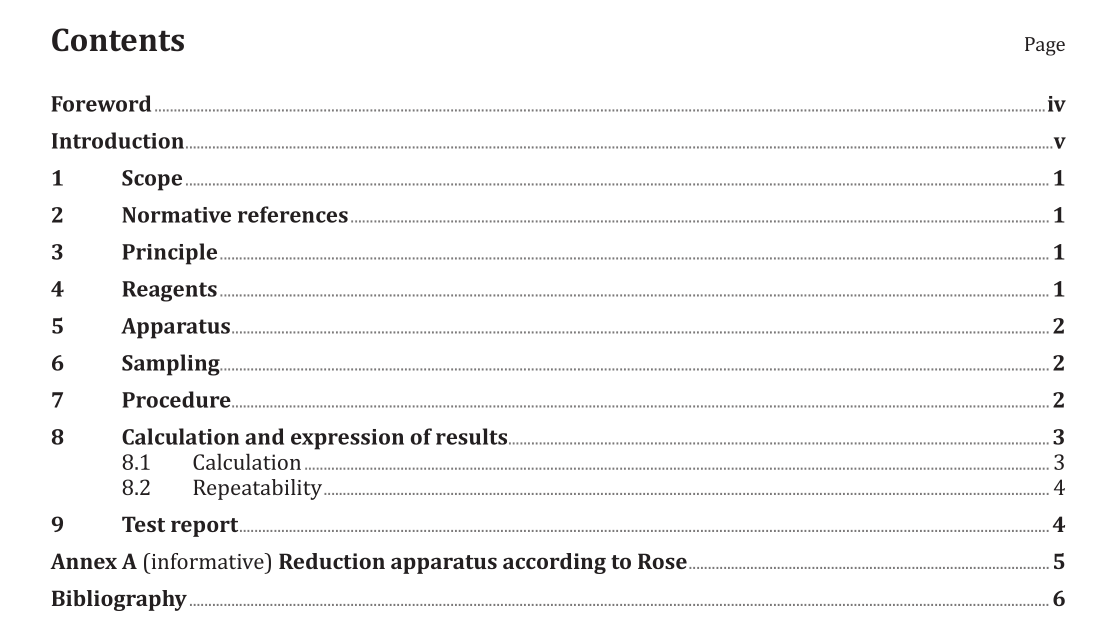ISO 11490:2015 pdf download.Jewellery — Determination of palladium in palladium jewellery alloys — Gravimetric determination with dimethylglyoxime
1 Scope
This International Standard specifies a gravimetric method for the determination of palladium in palladium jewellery alloys, preferably within the range of fineness stated in ISO 9202.
These alloys may contain silver, indium, gallium, copper, cobalt, nickel, tin, and ruthenium. Coprecipitated elements have to be determined by a suitable method and a correction applied.
2 Normative references
The following documents, in whole or in part, are normatively referenced in this document and are indispensable for its application. For dated references, only the edition cited applies. For undated references, the latest edition of the referenced document (including any amendments) applies.
ISO 11596, Jewellery — Sampling of precious metal alloys for and in jewellery and associated products
3 Principle
The sample is dissolved in aqua regia. Palladium is precipitated with dimethylglyoxime. If present, silver is separated as silver chloride. The palladium dimethylglyoxime compound is converted to metallic palladium by ignition and the latter is then determined gravimetrically.
4 Reagents
4.1 During the analysis, unless otherwise stated, use only reagents of recognized analytical grade and only distilled water or water of equivalent purity.
4.2 Nitric acid (HNO 3 ), approximately 65 % to 70 % HNO 3 (mass fraction).
4.3 Hydrochloric acid (HCl), 30 % to 37 % HCl (mass fraction).
4.4 Diluted hydrochloric acid, 8,5 % (mass fraction).
4.5 Dimethylglyoxime solution.
Dissolve 10 g of dimethylglyoxime in 1 000 ml of ethanol.
4.6 Ammonium chloride.
4.7 Diluted nitric acid, 1,39 %.
Cautiously add 10 ml of nitric acid (4.2) to 1 000 ml of water and mix.
4.8? Hydrofluoric acid, 40 % (mass fraction).
4.9 Diluted sulphuric acid, 50 % (mass fraction).
4.10 Reducing gas, such as hydrogen or a hydrogen/nitrogen mixture.
4.11 Inert gas under pressure, carbon dioxide or nitrogen are usual.
4.12 Aqua regia.
Mix three volumes of hydrochloric acid (4.3) and one volume of nitric acid (4.2).
5 Apparatus
5.1 Customary laboratory apparatus.
5.2 Reduction apparatus, see Figure A.1.
5.3 Platinum dishes, of volume 10 ml.
5.4 AAS or ICP-OES, or other means of determining traces of metal.
5.5? Muffle? furnace, capable of attaining at least 900 °C.
5.6? Ashless? filter? paper, capable of retaining particles greater than 3 μm.
5.7 Analytical balance, with a reading accuracy of 0,01 mg.
6 Sampling
The sampling procedure shall be performed in accordance with ISO 11596.
7.11 Transfer the impure palladium to a platinum dish (5.3). Moisten with hydrofluoric acid (4.8) and add three drops of dilute sulfuric acid (4.9). Heat until fumes start to evolve from the solution, cool, then extract the residue with a little hot water. Filter and wash with water. Combine the filtrate and washes with those from the previous filtration. Transfer the palladium and filter to a crucible, ignite at approximately 700 °C, and reduce as described in 7.9. Reweigh to obtain the final mass.
ISO 11490:2015 pdf download
